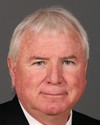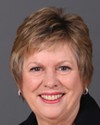Absolutely. There are multiple dimensions to the delivery of the mission, and, as I pointed out, the mission elements are more than only the fighting battle group that is there. There is a national capacity-building effort, the national training effort, the PRT effort, and the battle group.
To live in a counter-insurgency environment and to perform those operations—if I may regress a bit, I was in Bosnia. We were applying our effort to capacity building in Bosnia, but in a different environment. And because it's a counter-insurgency environment with the nature of the threat, we have adapted our baseline, as well as the specific mission training, to be able to ensure that our people have experienced that before they deploy, experienced it in their training before they see it in operations.
What that implies, in specific terms, is that when our soldiers and our leaders are engaged in their individual training, they're not being presented a training scenario that is the old “Warsaw Pact coming across the East German border” scenario. They're being presented a failed-state scenario, within which you find paramilitary forces, former military forces, terrorist extremist forces, crime and corruption, as well as the non-combatants living in the battle spaces, as well as all the international actors who would be there. So we are now treating that as normal; that's no longer abnormal.
What is complicating is the methods that are being used by the opponents. So what we do in that particular case is to introduce their methods in our baseline training, so we are accustomed to seeing that in our military training. Then for specific threats in a specific theatre, we ensure that we deliver that to our soldiers well on the journey, before they get there, and they see it in practice before they get there—like the IED threat, for example. Our soldiers now treat as normal, failed and failing state scenarios. We treat as normal multiple threats, be it a counter-insurgency, be it an insurgency, be it failed military, be it across-the-border threats, and we adapt them to the specific mission. The Warsaw Pact-type scenarios are no longer our baseline.




